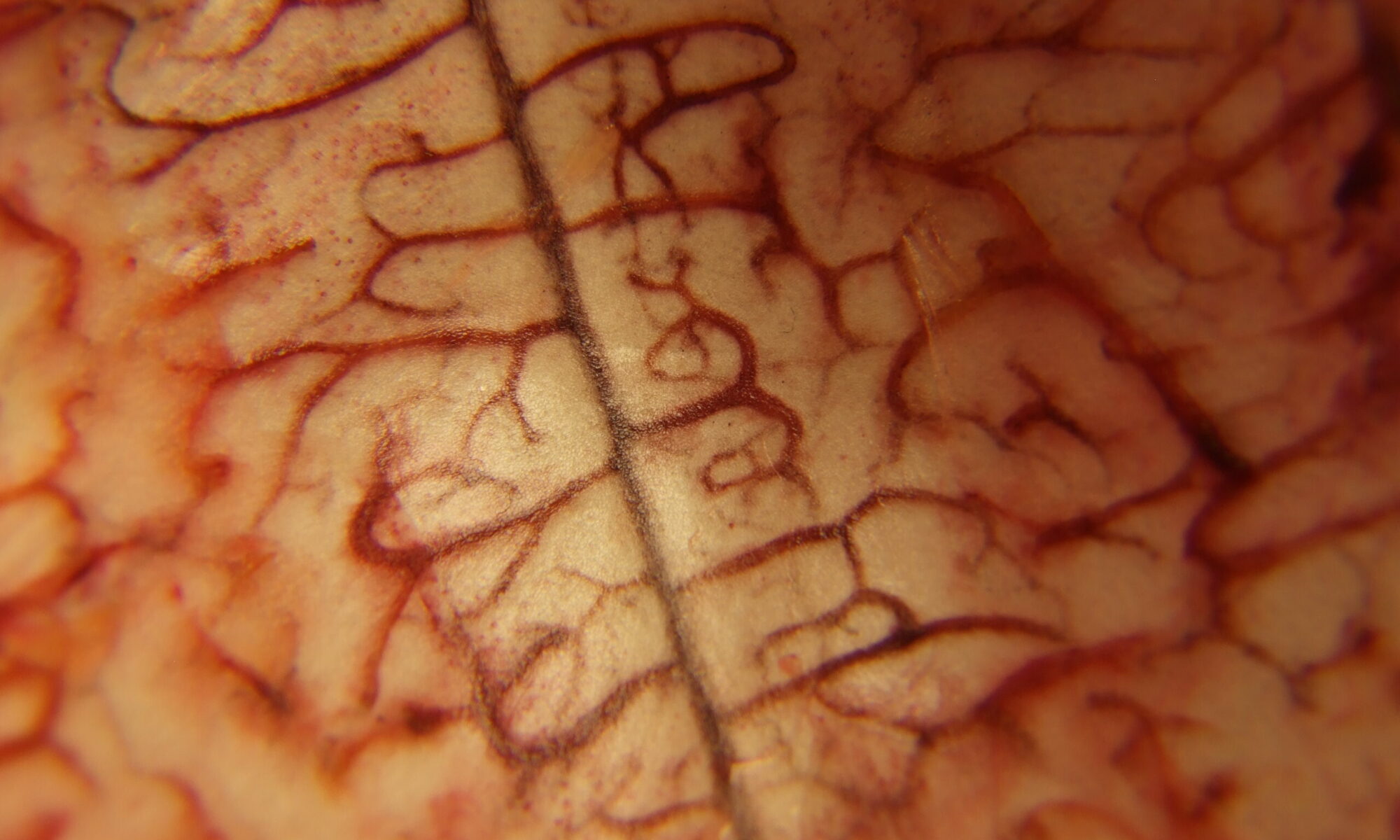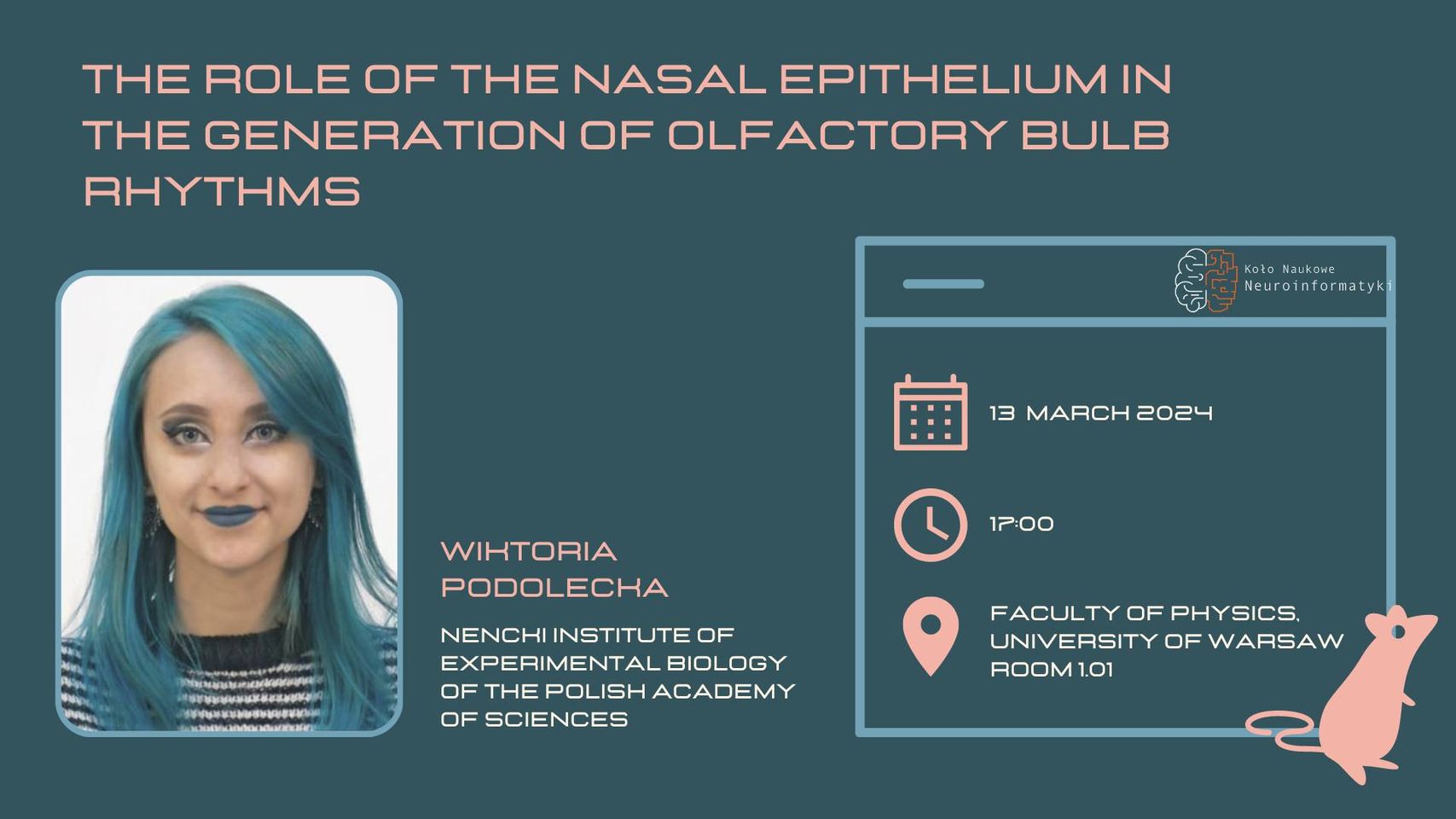Serdecznie zapraszamy na pierwsze spotkanie Koła Naukowego Neuroinformatyki w semestrze letnim. Tym razem będziemy gościć prelegentkę Wiktorię Podolecką, doktorantkę Pracowni Neuroinformatyki w Instytucie Biologii Doświadczalnej im. M. Nenckiego PAN.
Spotkanie odbędzie się w środę 13.03.2024 o godzinie 17:00 w sali 1.01.
Po wykładzie zapraszamy na spotkanie Koła, gdzie będziecie mieli okazję dowiedzieć się więcej o naszej działalności i dołączyć w nasze szeregi.
Kliknij aby zobaczyć wydarzenie!
Abstrakt wykładu:
Changes in olfaction are emerging as early warning signs of several major neurological diseases. Neurological diseases are also associated with aberrant brain rhythms. Olfactory sensory neurons (OSN) deliver input from the nasal epithelium (NE) to the olfactory bulb (OB) and are key drivers of rhythmicity.
Here, we examine the role of sensory input arising from the NE in the generation of electrophysiological rhythms in the OB. Rats were implanted with electrodes in the OB, PFC and VS. Post-surgery gadolinium/saline was infused bilaterally to both nares. Ketamine infusions were done every 4 days. Behavioral tests to test anosmia were done every 2 days. Olfactory marker protein (OMP) immunohistochemistry was used to stain for OSN at different time points. Analyses of LFPs, during waking, revealed reduced amplitude of HFO (130-180 Hz) in gadolinium-infused rats compared to saline-infused rats. This effect lasted up to 10 days. Behavioural tests have shown that anosmia lasted around 10 days.
Immunohistochemical analyses revealed gadolinium infusion was associated with weaker OMP staining in the NE. Given that the OB can orchestrate brain-wide rhythms, we speculate that early deficits in olfactory function may contribute, at least in part, to changes in brain rhythms reported in neuropsychiatric diseases.


